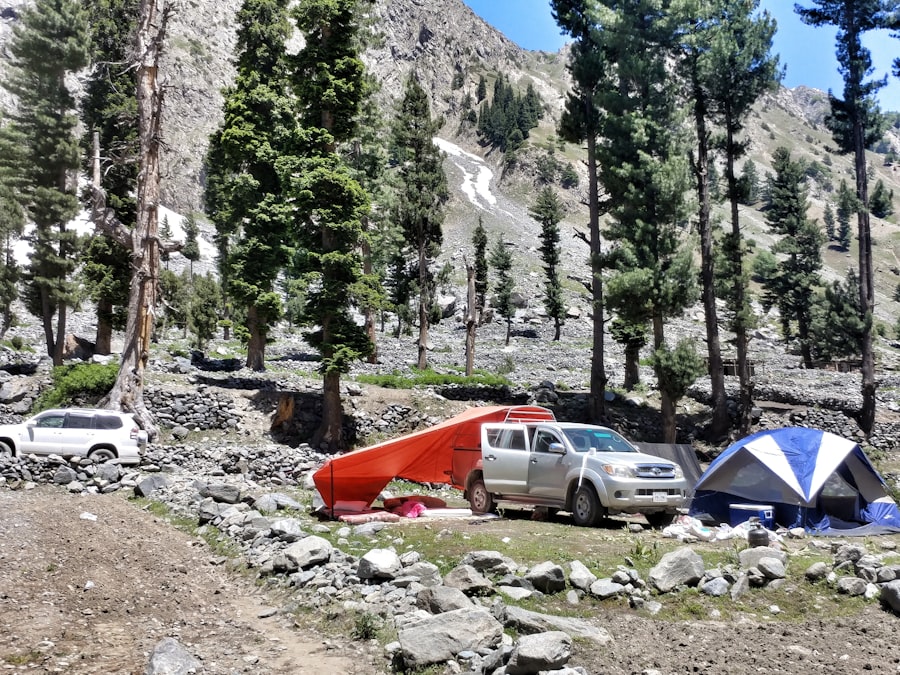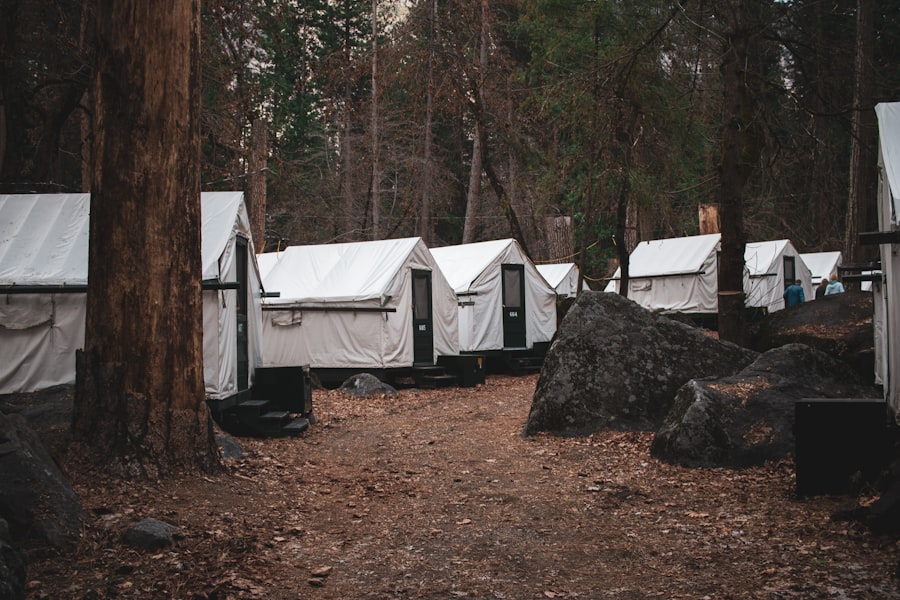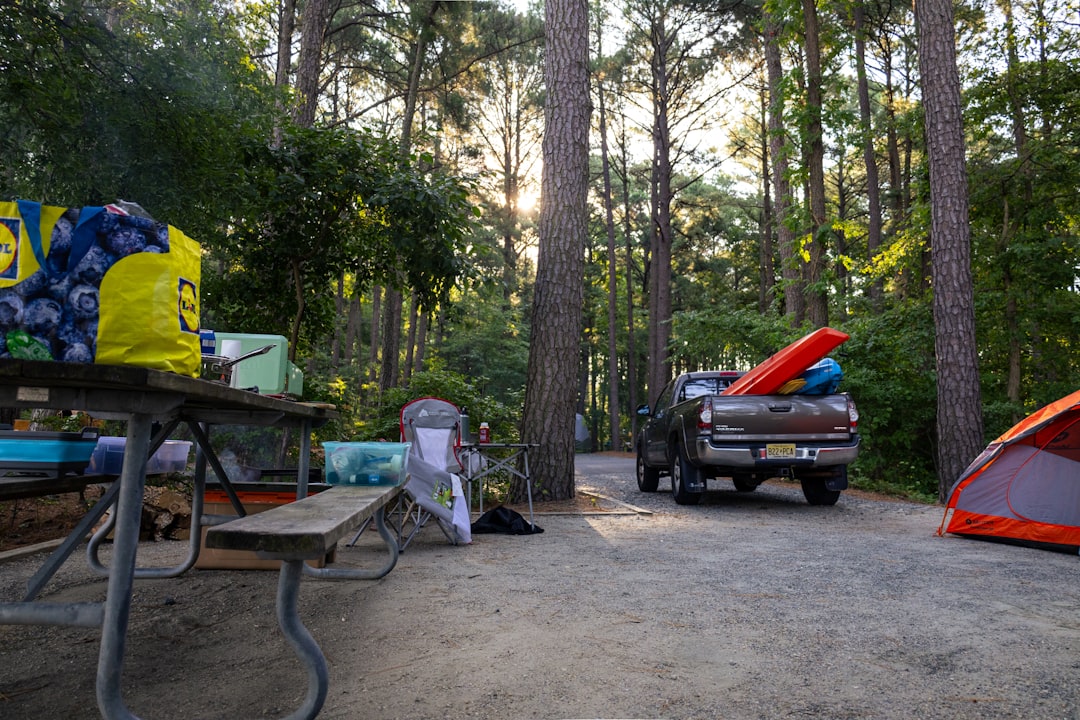Camp Century, a once-secret military installation located in the icy expanse of Greenland, has become a focal point for discussions surrounding environmental responsibility and international cooperation. Established during the Cold War, this site was intended to serve as a base for nuclear missile testing and research. However, as time passed and the geopolitical landscape shifted, the camp was abandoned, leaving behind a legacy of environmental concerns that now demand urgent attention.
The cleanup of Camp Century is not merely a matter of removing physical debris; it involves addressing the potential contamination of the surrounding environment and ensuring that future generations are not burdened by the consequences of past actions. As you delve into the complexities of Camp Century’s cleanup, you will discover that it is a multifaceted issue involving historical, environmental, and political dimensions. The site serves as a stark reminder of the Cold War era’s military ambitions and the environmental toll they can exact.
The cleanup efforts are not just about rectifying past mistakes; they also represent an opportunity for nations to collaborate on environmental stewardship and set a precedent for how similar situations might be handled in the future. Understanding the history and implications of Camp Century is crucial for grasping the significance of its cleanup.
Key Takeaways
- Camp Century was a military base built under the ice in Greenland during the Cold War, and its cleanup has become a pressing environmental concern.
- The history of Camp Century includes its abandonment in 1967 and the subsequent discovery of environmental hazards such as radioactive waste and diesel fuel.
- The United States government has taken responsibility for the cleanup efforts at Camp Century, acknowledging the environmental impact of its military activities.
- The Danish government has also been involved in the cleanup, as Greenland is an autonomous territory within the Kingdom of Denmark.
- The financial costs of the Camp Century cleanup are significant, and there is ongoing debate about who should bear the responsibility for funding it.
The History of Camp Century and its Abandonment
Camp Century was established in 1959 by the United States Army Corps of Engineers as part of a broader strategy to counter Soviet influence during the Cold War. The camp was designed to be a self-sustaining facility, complete with living quarters, a power plant, and even a chapel, all buried beneath the Greenland ice sheet. Its primary purpose was to test nuclear missile systems and conduct research on Arctic conditions.
However, as geopolitical tensions eased and military priorities shifted, the camp was deemed obsolete and was officially abandoned in 1967. The abandonment of Camp Century was not just a logistical decision; it was also a reflection of changing attitudes toward military operations and environmental responsibility. As you explore this history, you will find that the decision to leave behind infrastructure and waste has had lasting repercussions.
The camp’s closure marked the end of an era but also initiated a new chapter fraught with environmental challenges. The materials left behind, including fuel tanks and other hazardous waste, pose significant risks to the fragile Arctic ecosystem, raising questions about accountability and responsibility.
The Environmental Concerns Surrounding Camp Century

The environmental concerns surrounding Camp Century are profound and multifaceted. As you consider the implications of the camp’s abandonment, it becomes clear that the potential for contamination is significant. The permafrost that once encased the camp is beginning to thaw due to climate change, which raises alarms about the release of hazardous materials into the surrounding environment.
This thawing process could lead to the leaching of toxic substances into the soil and water systems, posing risks not only to local wildlife but also to human populations that rely on these resources. Moreover, the presence of buried waste, including polychlorinated biphenyls (PCBs) and other hazardous materials, adds another layer of complexity to the cleanup efforts. As you reflect on these environmental concerns, it is essential to recognize that they extend beyond Greenland’s borders.
The Arctic region is interconnected, and pollution in one area can have far-reaching effects on ecosystems and communities across national boundaries. This reality underscores the urgency of addressing the cleanup at Camp Century not only for local environmental health but also for global ecological stability.
The Role of the United States Government in the Cleanup Efforts
| Effort | Metrics |
|---|---|
| Funding | Amount allocated |
| Regulation | Laws and policies implemented |
| Coordination | Collaboration with local authorities |
| Monitoring | Environmental impact assessments |
The United States government plays a pivotal role in the cleanup efforts at Camp Century, given its historical responsibility for establishing and operating the facility. As you examine this involvement, you will find that it encompasses various agencies, including the Department of Defense and the Environmental Protection Agency (EPA). These agencies are tasked with assessing the extent of contamination and developing strategies for remediation.
However, navigating this bureaucratic landscape can be challenging, as differing priorities and perspectives often complicate decision-making processes. In recent years, there has been increasing pressure on the U.S. government to take decisive action regarding Camp Century’s cleanup.
Environmental advocacy groups have raised awareness about the potential risks associated with the site, urging officials to prioritize remediation efforts. As you consider these dynamics, it becomes evident that public opinion can significantly influence governmental action. The challenge lies in balancing national security interests with environmental responsibilities, a task that requires careful consideration and collaboration among various stakeholders.
The Involvement of the Danish Government in the Cleanup
The Danish government has also emerged as a key player in the cleanup efforts at Camp Century, given Greenland’s status as an autonomous territory within the Kingdom of Denmark. As you explore this involvement, you will find that Denmark has expressed concern over the environmental implications of the abandoned camp and has sought to engage in discussions with the United States regarding remediation strategies. This collaboration reflects a broader commitment to addressing environmental issues that transcend national borders.
Danish officials have emphasized the importance of transparency and cooperation in tackling the challenges posed by Camp Century. As you delve deeper into this partnership, you will discover that it involves not only technical discussions about cleanup methods but also considerations related to indigenous rights and local community engagement. The involvement of both governments highlights the necessity of working together to find sustainable solutions that respect both environmental integrity and local interests.
The Financial Costs of Camp Century Cleanup

The financial costs associated with cleaning up Camp Century are substantial and complex. As you analyze this aspect of the situation, it becomes clear that estimating these costs involves numerous variables, including the extent of contamination, required remediation technologies, and ongoing monitoring efforts. Initial estimates suggest that cleanup could run into millions or even billions of dollars, depending on how extensive the contamination is found to be.
As you consider these financial implications, it is essential to recognize that budgetary constraints often limit governmental capabilities to address environmental issues effectively. This reality raises questions about how best to allocate resources for cleanup while balancing other pressing national priorities.
The financial burden associated with Camp Century’s cleanup underscores the need for innovative funding solutions and international cooperation to share costs equitably.
The Legal Responsibility for Funding the Cleanup
Determining legal responsibility for funding the cleanup at Camp Century is a complex issue that involves multiple layers of accountability. As you explore this legal landscape, you will find that questions arise regarding who should bear the financial burden: the United States government, which established and operated the camp, or Denmark, which has jurisdiction over Greenland? This ambiguity complicates negotiations and can lead to disputes over liability.
International law also plays a role in shaping these discussions. As you consider legal frameworks governing environmental protection and responsibility, it becomes evident that existing treaties may not adequately address situations like Camp Century’s abandonment. This gap in legal clarity can hinder progress toward effective remediation efforts and necessitates ongoing dialogue between involved parties to establish a fair resolution.
The Challenges of Holding Parties Accountable for Cleanup Costs
Holding parties accountable for cleanup costs at Camp Century presents numerous challenges that extend beyond legal frameworks. As you reflect on these difficulties, consider how historical context influences current perceptions of responsibility. The Cold War era’s military operations were often shrouded in secrecy, leading to a lack of transparency regarding environmental impacts.
This historical backdrop complicates efforts to assign accountability today. Moreover, political dynamics can further complicate accountability measures. As you analyze these challenges, it becomes clear that differing national interests may impede progress toward a unified approach to cleanup funding.
Engaging stakeholders from various sectors—governmental agencies, indigenous communities, environmental organizations—will be crucial in fostering collaboration and ensuring that all voices are heard in discussions about accountability.
The Potential Impact on International Relations
The cleanup efforts at Camp Century have broader implications for international relations between the United States and Denmark, as well as other Arctic nations. As you consider these dynamics, it becomes evident that how both countries approach this issue could set precedents for future collaborations on environmental matters in sensitive regions like the Arctic. A successful partnership could enhance diplomatic ties and foster goodwill between nations facing similar challenges.
Conversely, failure to address cleanup responsibilities adequately could strain relations and lead to mistrust among nations operating in Arctic territories. As you reflect on these potential impacts, it is essential to recognize that international cooperation is vital for addressing shared environmental concerns effectively. The situation at Camp Century serves as a case study for how nations can work together—or fail to do so—in confronting pressing global issues.
The Future of Camp Century and its Cleanup
Looking ahead, the future of Camp Century remains uncertain but holds promise for positive change if approached thoughtfully. As you contemplate what lies ahead for this site, consider how advancements in technology may facilitate more effective cleanup methods. Innovative remediation techniques could minimize environmental impacts while ensuring thorough decontamination efforts.
Additionally, fostering collaboration between governments, scientists, indigenous communities, and environmental organizations will be crucial in shaping a sustainable future for Camp Century. Engaging diverse perspectives can lead to more comprehensive solutions that address both ecological integrity and social justice concerns. As you reflect on these possibilities, remember that proactive measures taken today can pave the way for a healthier environment tomorrow.
Finding a Sustainable Solution for Camp Century
In conclusion, finding a sustainable solution for Camp Century requires a multifaceted approach that encompasses historical accountability, environmental stewardship, and international cooperation. As you have explored throughout this article, addressing the challenges posed by this abandoned military installation involves navigating complex legal frameworks while fostering collaboration among various stakeholders. The cleanup efforts at Camp Century serve as an opportunity not only to rectify past mistakes but also to set a precedent for how nations can work together in addressing shared environmental challenges.
By prioritizing transparency, accountability, and innovative solutions, you can contribute to ensuring that future generations inherit a healthier planet free from the burdens of past actions. Ultimately, your engagement in these discussions can help shape a more sustainable future for both Camp Century and our global environment as a whole.
In the ongoing debate over who should bear the financial responsibility for the cleanup of Camp Century, a Cold War-era U.S. military base in Greenland, various stakeholders have weighed in with differing opinions. The base, which was abandoned in the 1960s, has become a point of contention due to the environmental hazards posed by its leftover waste, now exposed due to climate change. For more insights into the complexities surrounding this issue, you can read a related article on the topic by visiting this page. This article delves into the historical context of Camp Century and explores the international discussions about environmental accountability and financial responsibility.
WATCH THIS! Greenland’s Ice Is Hiding A Nuclear Time Bomb
FAQs
What is Camp Century?
Camp Century was a military base built under the ice in Greenland by the United States Army in 1959. It was used for scientific research and as a cover for the deployment of ballistic missiles during the Cold War.
Why does Camp Century need to be cleaned up?
Camp Century was abandoned in 1967, and its infrastructure and waste were left behind. Due to the melting ice caused by climate change, there is a risk of pollutants and waste being released into the environment.
Who is responsible for the cleanup of Camp Century?
The responsibility for the cleanup of Camp Century falls on the government of Denmark, as Greenland is an autonomous territory within the Kingdom of Denmark. However, the United States has also expressed willingness to contribute to the cleanup efforts.
Who will pay for the cleanup of Camp Century?
The exact financial responsibility for the cleanup of Camp Century is still being negotiated between the governments of Denmark and the United States. Both parties have expressed a commitment to finding a mutually acceptable solution for funding the cleanup.
What are the challenges of cleaning up Camp Century?
The challenges of cleaning up Camp Century include the remote location, the harsh Arctic environment, and the technical difficulties of removing and disposing of the waste and infrastructure that have been buried under the ice for decades.
